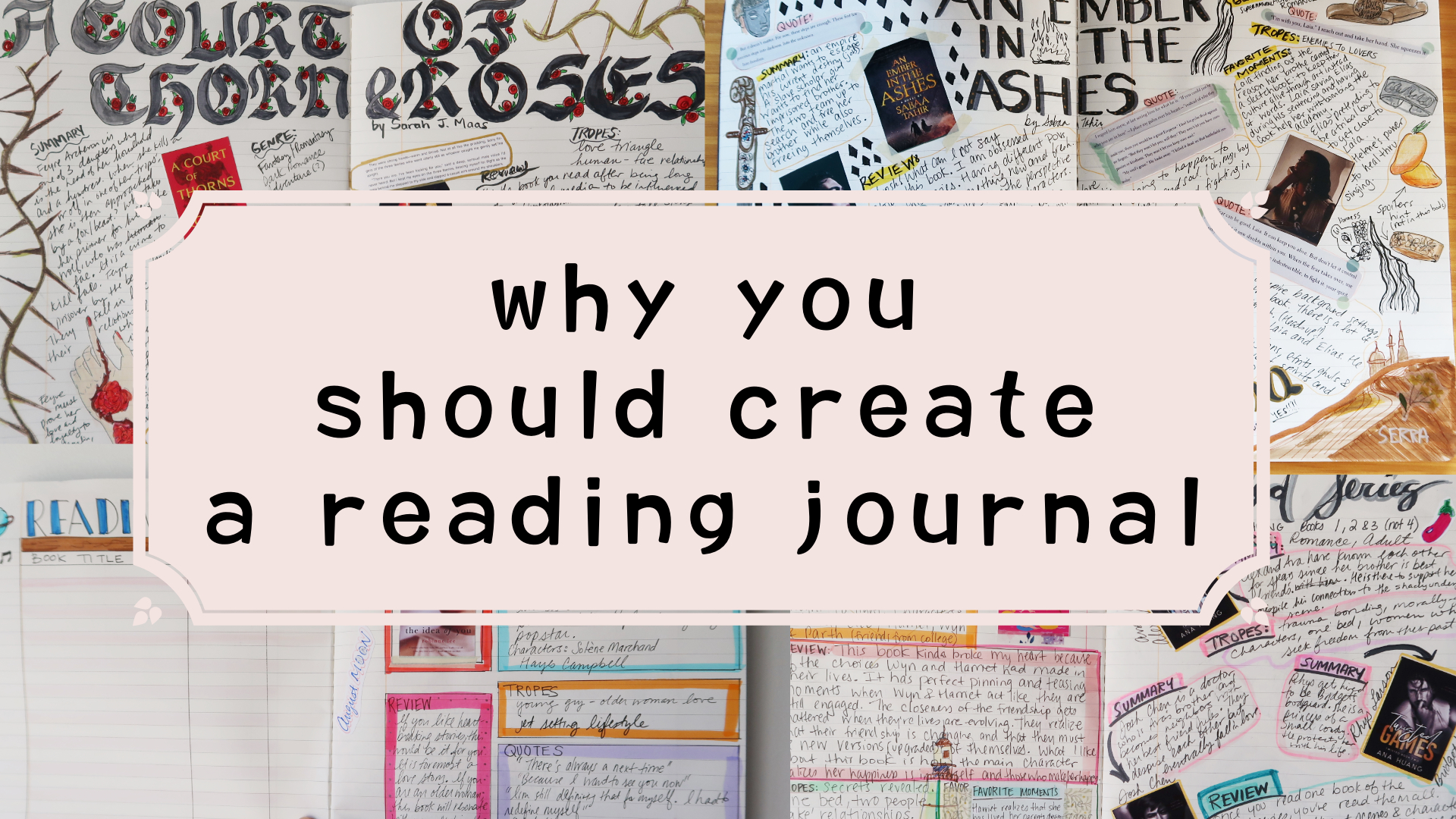
Several months ago, I stumbled upon an activity that I had not considered before: reading journals.I never really thought about writing small reviews of the books I’ve read. In middle school they were called summaries.
Journaling my thoughts and emotions into a notebook has always been a part of me so as long as I can remember. I had several journals throughtout my teen years but because I got conscious that if someday someone found my journals and read them, I would be very very embarrassed. I don’t know know why I worried too much about that, but I did manage to trash them before anyone could get their hands on them. Which I know realize that record keeping is less embarrassing than forgetting and having no history at all.
What is a reading journal?
A reading journal is a personal space for book lovers and students alike to delve deeper into their reading experience. It’s more than just a log of titles and dates. It’s a place to capture your thoughts, feelings, and learnings sparked by the book. You can write about favorite quotes, analyze characters and plot twists, or explore connections to your own life. Ultimately, a reading journal is a tool to become a more engaged reader and to hold onto the treasures you discover within the pages.
Here are 5 reasons why you should be keeping a reading journal.

Deepen your Understanding
As you reflect on what you read, you’ll gain a stronger grasp of the characters, plot and themes.
Enhance Your Memory
Jotting down key points and quotes will help you remember the story’s details long after you finish reading.
Track Your Progress
A journal lets you see how much you’ve read and how your tastes evolve over time
Spark Creativity
Analyzing what you read can inspire your own writing or creative endeavors.
Connect with Others
Share your journal entries in online communities or book clubs to discuss your thoughts and discover new perspectives.
What’s included in a reading journal?
The important parts of a reading journal can be split into two categories: tracking and reflecting.
Tracking helps you keep tabs on your reading habits and progress. This includes basic information like:
- Book title and author
- Start and finish dates
- Genre and page count
Reflecting is where the fun begins! Here, you can dig into your thoughts and responses to the book. Consider including:
- Favorite quotes or passages
- Character analysis and your feelings about them
- Reactions to plot twists or the overall story
- Connections to your own life or current events
- Themes you noticed and their significance
- Anything else that sparked your curiosity
Remember, your reading journal is personal. Don’t be afraid to get creative and include things like doodles, mind maps, or even short reviews.
What items do you need to get started with a reading journal?
Essentials:
- A notebook: This is the heart of your reading journal. Choose a size you’ll carry comfortably or keep on your nightstand.
- Writing utensil: Pen, pencil, or whatever you prefer to write with.
Optional but Enriching:
- Highlighters and pens in different colors: Can help visually categorize your notes and thoughts.
- Sticky notes: Great for jotting down quick thoughts or quotes you want to come back to later.
- Washi tape or stickers: Add a decorative touch and personalize your journal.
- Bookish paraphernalia (optional): Bookmarks, bookish stickers, small bookplates – all add a fun touch.
Digital Alternatives:
If you’re more comfortable digitally, there are reading journal apps available or you can create a digital version using note-taking apps or bullet journaling apps.
Keeping a reading journal is an investment in yourself as a reader. It allows you to not only track your progress but also to squeeze the most out of every book you encounter. By reflecting on characters, themes, and your own reactions, you’ll gain a deeper understanding of the stories you read and how they connect to your life. So, grab a notebook, open a book, and unlock a world of enhanced reading experiences through the power of a reading journal.
If you would like to see how I create my own reading journals, check out my youtube channel for the latest reading journal inspiration 

